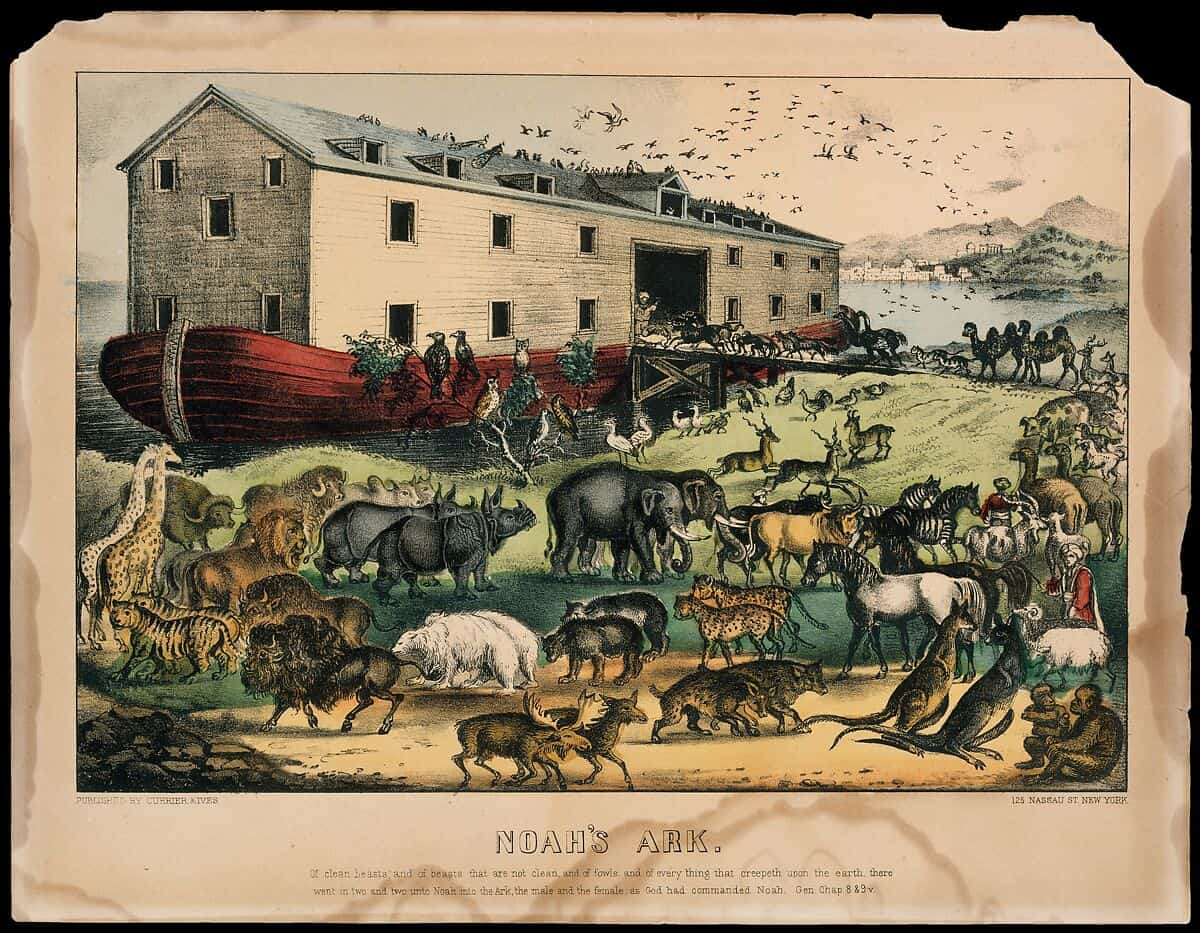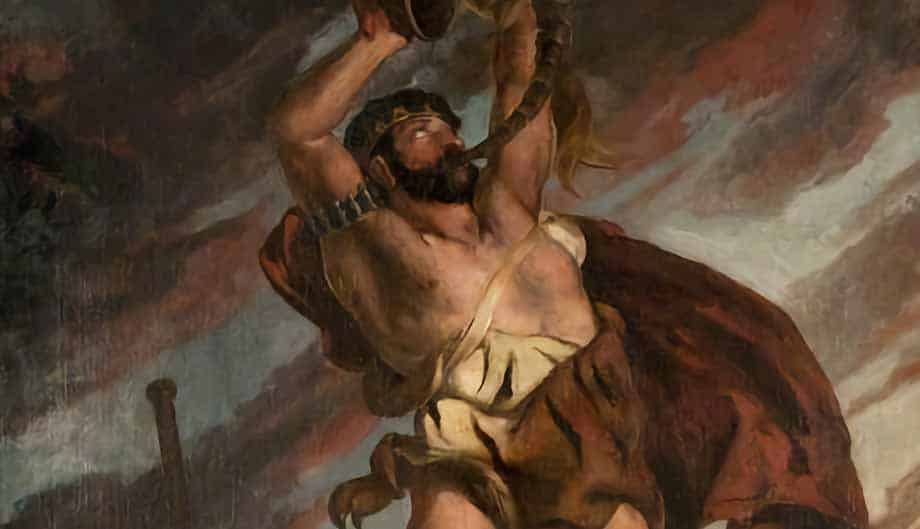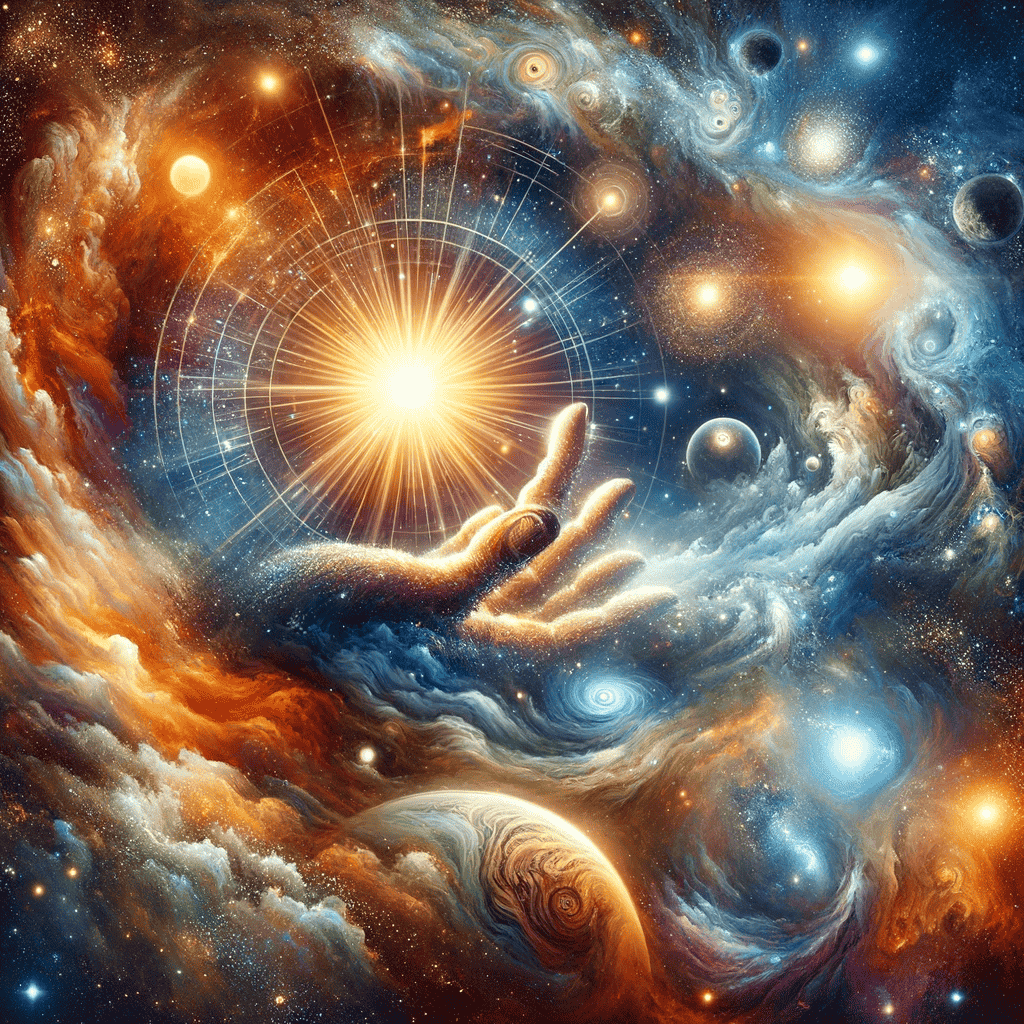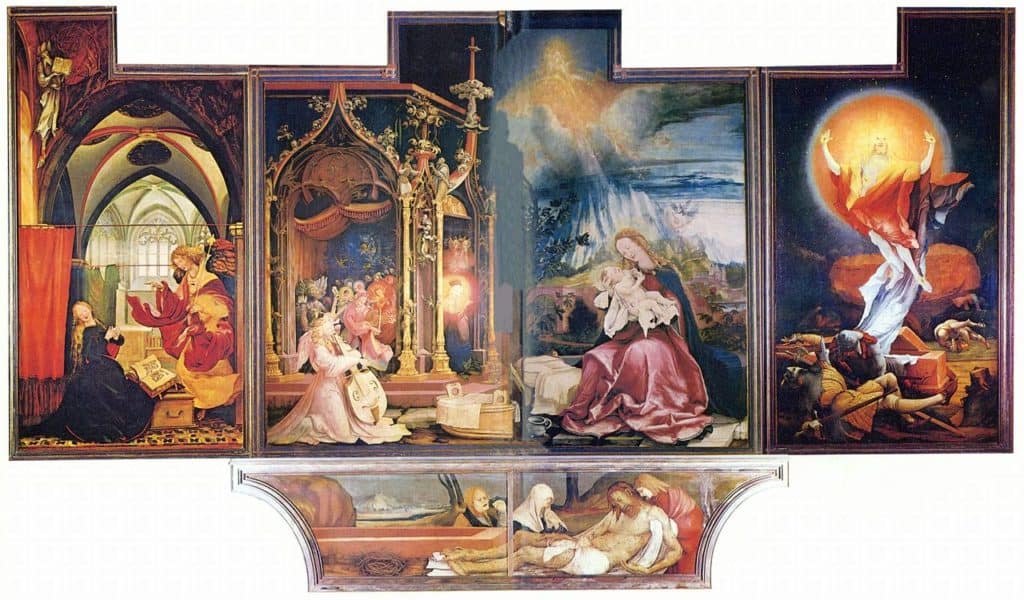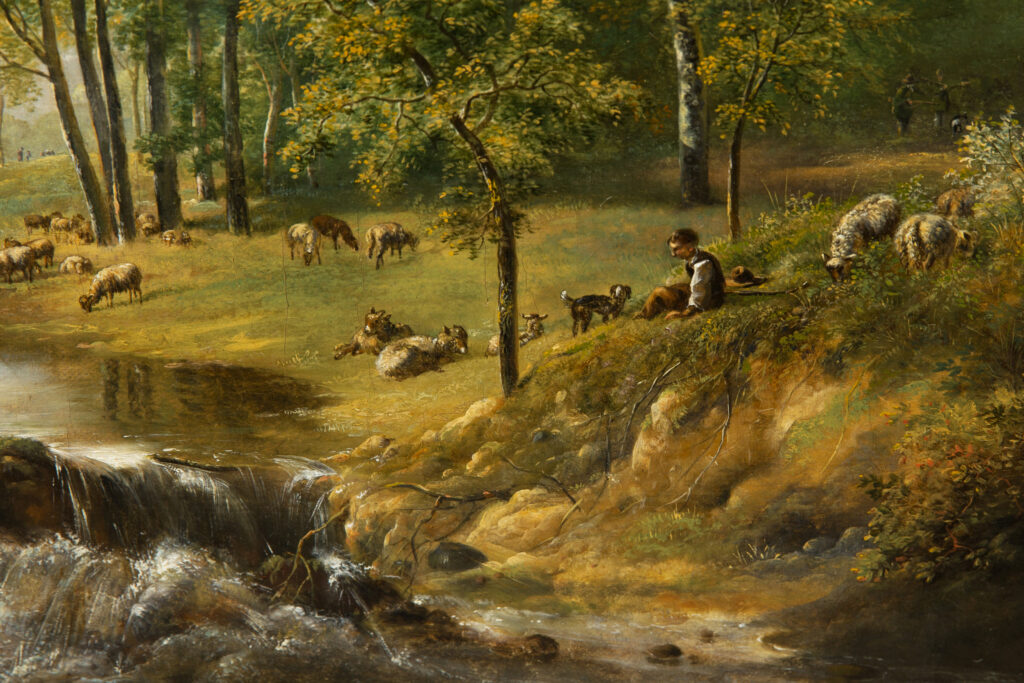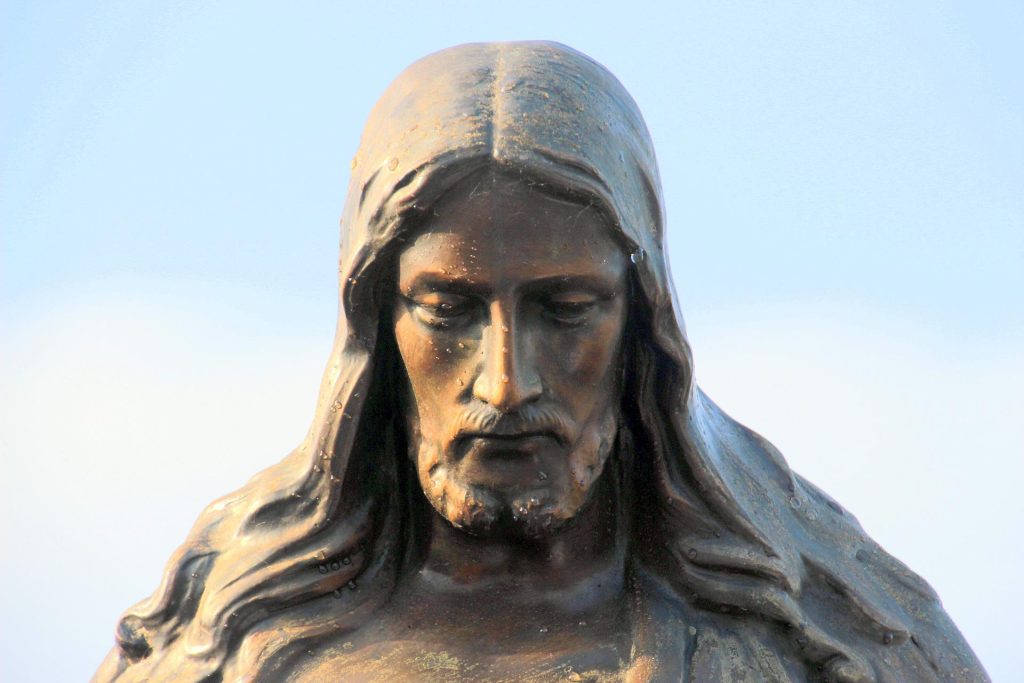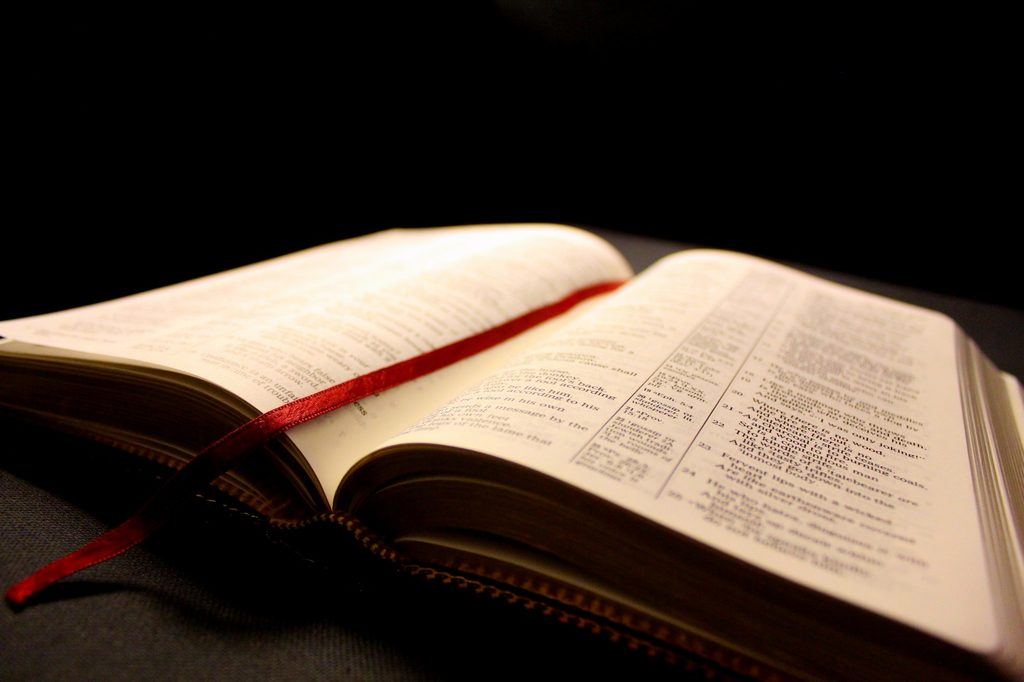The story of Noah, from the ancient Middle East, has versions found both in biblical texts and the Epic of Gilgamesh. The biblical account is filled with intricate layers of symbolism that can be peeled back. Throughout history, the story of the good man Noah has inspired diverse theological interpretations and provided a profound cultural impact. People have embarked on quests for archaeological validation of the story’s historicity and scrutinized those quests. Finally, the story of total destruction through flood waters finds contemporary relevance to pressing environmental and conservation challenges.
Summary of the Story of Noah
The tale of Noah’s Ark has traversed centuries and cultures. It is a narrative that recounts an event that permanently changed the earth and all its inhabitants. This story gives insight into the human condition and reveals the character of the God of the Bible. This epic story of the flood teaches about history, faith, and the providential God of the Christian religion. The biblical account of Noah can be found in Genesis 6:1-9:17.
The account of Noah’s Ark unfurls against the backdrop of an ancient world besieged by moral decay and wickedness. Humanity rebelled against God’s plans for his good creation in Genesis 1 and 2. God saw that their hearts were “only evil, all the time.” The earth was corrupt and full of violence, and God regretted ever creating humans.
Judgment
God pronounces His judgment to wipe humanity off the earth and start his creation fresh. However, God takes note of one righteous man, Noah, who has always been faithful. God shares His plans to send an overwhelming flood of rain that will last 40 days and 40 nights and commands Noah to build a large ship, an ark, so he and his family can escape judgment. In addition, God instructs Noah to take two of every kind of animal, along with food to feed them, on the ark to save them as well.
Salvation
Noah follows all of God’s commands, and his family and all the animals survive on the ark. Every other living thing on earth was destroyed in the flood. After 150 days, the waters receded and the ark came to rest on top of the mountains of Ararat. After 40 more days, Noah sent out a raven and a dove to look for signs of life, but they did not find anything. Seven more days passed before Noah sent out the dove again. This time, the dove returned with an olive branch. After another seven days, Noah sends the dove out again and it does not return.
Noah waited two more months until he and his family disembarked from the ark along with all the animals. He offered a sacrifice to God to thank Him for keeping them safe through this ordeal. God is so pleased, that He sends a rainbow as a sign that no matter how bad humanity becomes, He will never destroy the earth with a flood again.
Symbolic elements within the account of Noah and the Great Flood
The biblical story of Noah is filled with symbolism that gives deep meaning to this timeless narrative.
Specifications and Dimensions of the Ark
The ark itself was an architectural marvel and a testament to divine guidance. As described in the Book of Genesis, its specifications were grand and awe-inspiring. It measured 300 cubits in length, 50 cubits in width, and 30 cubits in height with three decks. The ark’s proportions are staggering—equivalent to approximately 450 feet in length, 75 feet in width, and 45 feet in height.
These dimensions, although often debated and interpreted in various ways, underscore the enormity of the task given to Noah. Constructing a vessel of such magnitude is a testament to his unwavering faith and dedication to God. Whether or not a person in that period could actually have constructed a vessel of these dimensions remains a subject of fascination for biblical scholars, architects, and enthusiasts alike. The detailed plans recorded in the account have sparked discussions about the Ark’s structural feasibility, the number of animals the Ark could accommodate, and the practicalities of housing and feeding animals from every corner of the Earth in the space described.
Literal or Symbol the Ark Foreshadows
Biblical literalists who take the story as a historical account have gone to great lengths speculating about how the current biodiversity on Earth could be traced back to a fairly recent beginning. Those who insist the account is a religious story, not science or history, have taken pains to point out the mathematical impossibilities of keeping so many animals and so much food in a confined space for so long.
The Ark itself is a potent symbol of salvation, a refuge from the storms of life, a sanctuary amid chaos. The Ark’s image serves as a reassuring icon, reminding individuals and communities that even amid life’s storms, there is the potential for deliverance and rebirth. It embodies the hope of survival and the belief in a better tomorrow.
In Christian theology, it serves as a foreshadowing of the salvation Jesus Christ provided through the cross in the New Testament. The account of Noah’s Ark teaches that God is faithful to provide a means of salvation for those who turn to him in the face of impending judgment and obey him. Just as He provided salvation for Noah and his family through the Ark, God provided salvation for all of humanity through Jesus’ death on the cross. But humanity must believe and obey to escape the coming judgment.
Noah: The Righteous and Faithful Steward
At the epicenter of this tale stands Noah, a man deemed righteous and blameless in the eyes of God. His unwavering faith and commitment to righteousness set him apart in a world marred by moral decay. Noah emerges as a symbol of faith and righteousness in the Bible. He is praised in Hebrews 11:7 and 2 Peter 2:5 as a hero of faith.
Noah’s character epitomizes obedience to God’s covenant. When God makes promises to people, He will always be faithful to those who are faithful to him. Further, Noah represents the chosen vessel through which God’s plan for salvation is executed. This makes Noah a foreshadowing of Jesus Christ, who is the ultimate vessel of salvation for humanity.
Noah’s Family: The Bonds of Kinship and Unity
Noah’s journey is not one undertaken in solitude. Noah’s wife, his three sons (Shem, Ham, and Japheth), and their respective wives comprise an integral part of this divine mission. They remind the world of the importance of human relationships and kinship. God did not decide to leave Noah to steward the Ark by himself. Though the Bible only speaks of Noah’s righteousness, God saw fit to give him helpers, just as He gave Adam a helper in Genesis 2, because “it is not good that the man should be alone.” (Genesis 2:18)
The shared purpose exhibited by Noah’s family depicts the broader human experience of unity in the face of adversity. The family’s mission to repopulate the earth after the judgment underscores the idea that God has reset creation with a fresh beginning.
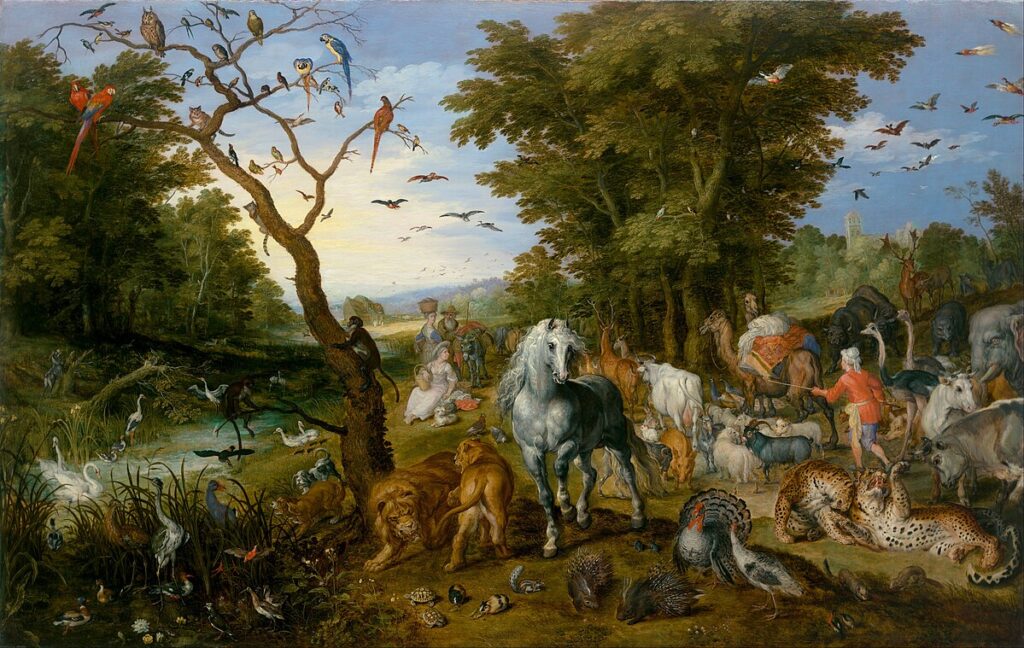
The Animals: Symbols of Hope and Renewal
A central and enchanting aspect of the Ark story is the inclusion of air-breathing animals from every corner of the Earth. Selected to repopulate the planet after the deluge, they symbolize the promise of renewal and the enduring beauty of the ecosystem created by God.
Both unclean and clean animals serve as a poignant reminder of the importance of all living creatures. Their presence aboard the Ark is a testament to God’s heart towards the world He created. Not only did He decide to spare Noah and his family, but He rescued some of his creation. It also underlines the divine mandate for stewardship of the created world and humanity’s responsibility to protect and cherish it. In a sense, the animals represent hope for a harmonious coexistence between humans and the environment.
The reason for the flood: God’s judgment on humanity
At the heart of the Noah’s Ark narrative lies a profound theological theme—the notion of divine judgment as a consequence of human sinfulness. It is important to remember that these events did not develop in a vacuum. Genesis 6 begins the story by mentioning the Nephilim, the sons of God, a much-debated group of men that symbolize the corruption of God’s faithful children which led to humanity forsaking God’s ways and God’s plan for them on earth. This corruption of the human race is mentioned in the passage that gives reason for God’s decree. The violence and corruption that came to typify human behavior contrasts with with Noah, who finds favor in the eyes of the Lord because of his righteousness. God’s decision to unleash a catastrophic biblical flood upon the Earth serves as a stark reminder of the holiness of God and the moral accountability of humanity.
This aspect of the story prompts theological contemplation, sparking discussions about the nature of God’s judgment, divine mercy, and the interplay between human actions and divine intervention impacting the entire world. It poses questions about the consequences of moral decay and the hope of redemption, inviting individuals and communities to reflect on the themes of righteousness and obedience in their own lives.
Other symbolism within the story
The floodwaters serve as a metaphor for purification and renewal. Just as the Earth was cleansed of corruption, individuals can undergo personal transformation and renewal through acts of repentance and righteousness.
As Noah and his family’s time on the Ark drew to an end, Noah sent out a series of birds from the Ark as a test to see if the land was yet habitable. They had been on the Ark for about a year. For one of the tests, Noah sent out a dove that soon returned with a fresh olive leaf. This image has been co-opted as a symbol of hope. Even though the inhabitants of the Ark did not know how long it would be before they could leave the Ark, they were assured that God would provide.
God gives the rainbow to all humanity as a promise to never flood the whole earth again. It is a symbol of God’s grace and shows his steadfastness. He will never break His promise and the rainbow to remind humanity of His goodness and mercy.
Interpretations across different religious traditions
The narrative of Noah’s Ark is a quintessential story held by not one, but three religious traditions. Across Judaism, Christianity, and Islam, the Ark serves as a symbol of hope, redemption, and divine providence.
Contemporary religious perspectives on Noah’s Ark are as diverse as the belief systems they represent. Among the adherents who hold a literal interpretation of the story, there are differences as to whether the catastrophic event was a regional or global flood. Others view the narrative not as recounting a real event but as a parable or allegory. They emphasize the story’s moral and spiritual lessons rather than its historical accuracy.
Within different religious groups, there is an ongoing dialogue about the relevance of Noah’s Ark in the modern world. It continues to inspire sermons, discussions, and reflections on topics ranging from environmental stewardship to social justice, reminding believers of their ethical responsibilities in a rapidly changing world.
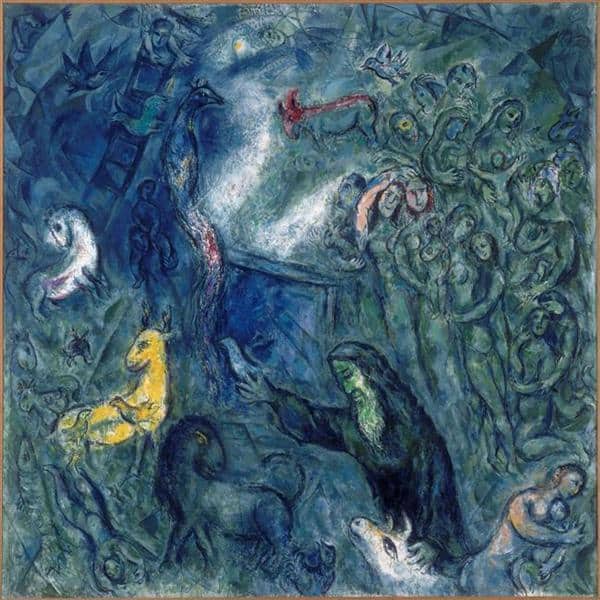
Judaism
In Judaism, the Torah, the Jewish faith’s foundational text, contains the account of Noah’s Ark. The Jewish tradition views the story as a testament to God’s judgment against human sinfulness and underscores the importance of living a righteous life. Within Jewish tradition, the Ark’s lesson is one of ethical responsibility, emphasizing the need for individuals to act justly and compassionately so that they find favor with God as Noah did.
Christianity
Christianity regards the Ark as a precursor to the New Covenant established through Jesus Christ. The floodwaters and the Ark foreshadow the cleansing of sin through baptism and the promise of salvation through the work of Jesus Christ on the cross. God established a covenant with Noah and gave humanity the rainbow as a reminder that He would never break his promise. In this context, Noah becomes a symbol of faith and obedience that leads to salvation. Christians often see the Ark itself as a prefiguration of the Church—a sanctuary for the faithful amidst the chaos of the world.
Islam
In Islam, believers recount the story of Noah (Nuh in Arabic) in the Quran, emphasizing God’s mercy and guidance to humanity. It portrays Noah as a prophet chosen to warn the people of his time about the consequences of their wrongdoing. Muslims see the Ark as a divine vessel of salvation and a symbol of God’s benevolence. Within the Islamic tradition, the narrative stresses the importance of submission to God’s will and the moral imperative of righteousness.
The moral lessons of Noah’s Ark
The appeal of Noah’s Ark transcends religious boundaries, resonating with people of various beliefs and backgrounds. The story imparts valuable moral lessons that continue to find relevance.
One of the central lessons is that of faith, exemplified by Noah’s trust in God’s guidance. His obedience to God’s command, even in the face of seemingly insurmountable challenges, serves as an inspiration for believers of all faiths to trust and obey God.
Obedience to God’s moral laws is another critical theme. Noah’s adherence to God’s instructions, even when it requires great sacrifice and effort, displays the importance of obedience in faith. Even though people mocked Noah for trusting God, his righteousness and faith in following God’s instructions ultimately vindicated him.
Noah’s Ark in art, literature, and popular culture
The narrative of Noah’s Ark has found ongoing life in art, literature, and popular culture. Its themes of survival, faith, and divine intervention have captivated the imaginations of artists, writers, and creators for centuries.
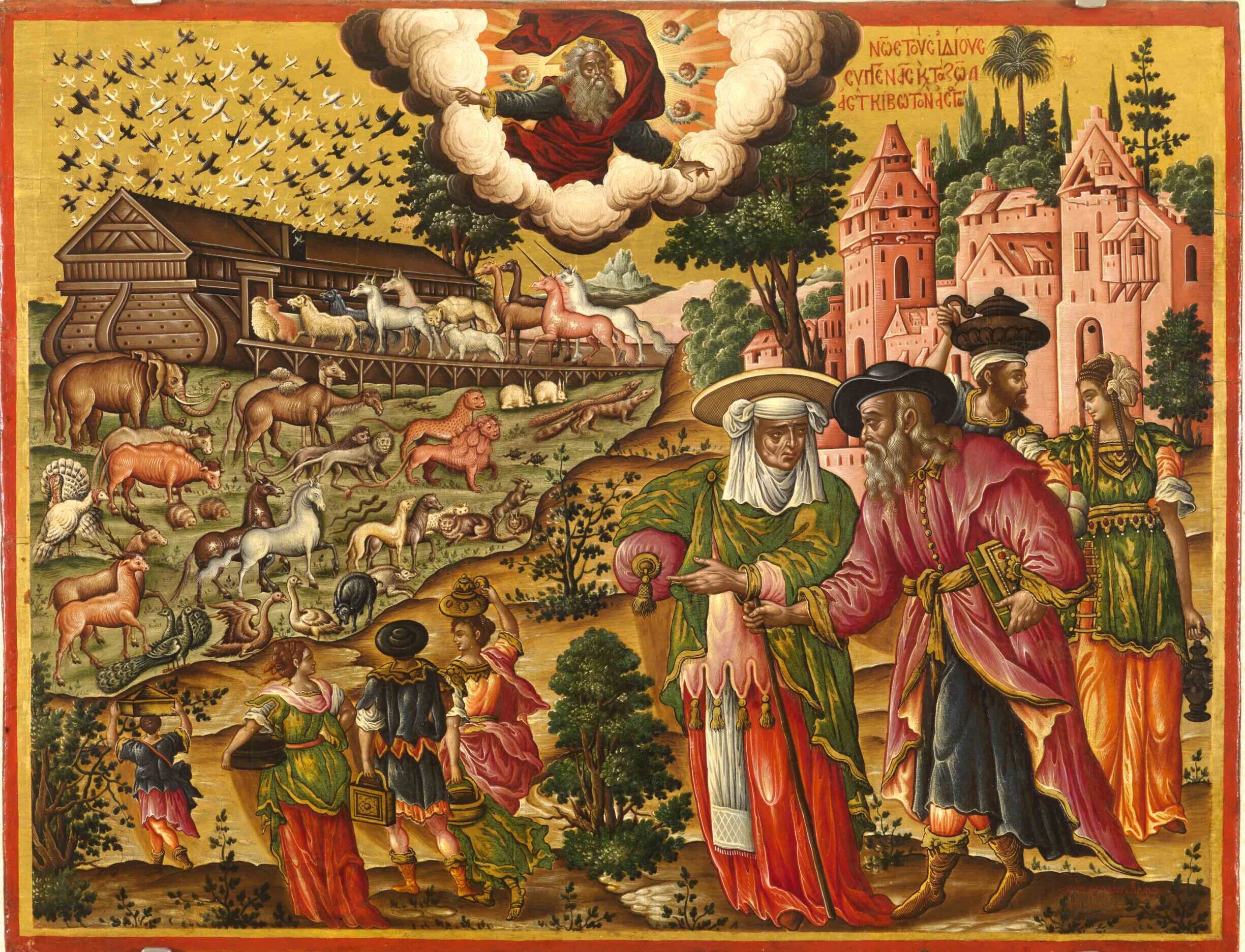
In the realm of art, the Ark has been a recurring motif throughout history. Renowned artists such as Theodore Poulakis, Edward Hicks, and Marc Chagall have depicted scenes from the Noah’s Ark story, each imbuing their works with their unique interpretations and artistic styles. These works of art serve as visual representations of the human experience, offering viewers a glimpse into the challenges and triumphs of this ancient narrative.
Literature has also been enriched by the Ark’s symbolism and themes. Literary giants like John Milton, Herman Melville, and Virginia Woolf have drawn inspiration from the story, weaving its elements into their works. Whether exploring themes of moral redemption, the struggle against adversity, or the search for meaning, these authors have harnessed the timeless symbolism of Noah’s Ark to convey their narratives and messages.
Popular culture has likewise embraced Noah’s Ark as a source of inspiration. Contemporary audiences have witnessed the reimagining and retelling of the story, from Hollywood blockbusters like “Evan Almighty” to animated films such as “Noah’s Ark: The New Beginning.” Director Darren Aronofsky also tackled the story in his 2014 epic “Noah.”
Children’s literature also embraces the Ark. The story is presented in engaging and accessible ways to educate the younger generation about the values and lessons embedded in the story. These adaptations often highlight the importance of compassion, teamwork, and the responsibility to protect the natural world.
Historical attempts to find the Ark
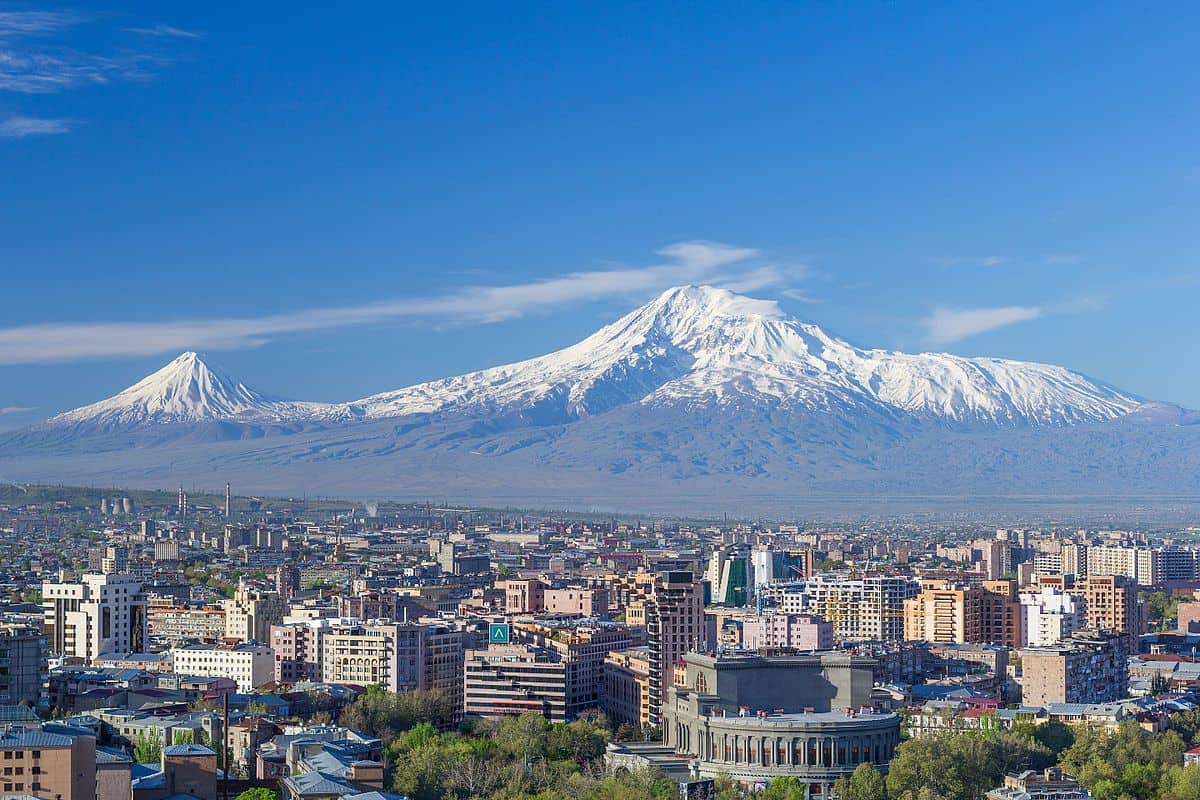
The quest to unearth tangible evidence of Noah’s Ark dates back centuries, spanning numerous expeditions and investigations. Adventurers, scholars, and explorers have ventured into the remote and rugged Mount Ararat, one of the highest mountains in Turkey, traditionally believed to be the resting place of the Ark after the Great Flood. A fervent desire to confirm the biblical account and provide empirical validation for one of humanity’s most cherished stories drove these early efforts.
Despite their determination, these early explorers faced formidable challenges, including treacherous terrain, harsh weather conditions, and limited access to advanced technology. While some reported intriguing findings, such as wooden fragments and anomalous geological formations, definitive proof of the Ark’s existence remained elusive. Experts in archaeology and history have dismissed more contemporary claims of finding compelling evidence of the Ark as fraudulent.
Advancements in technology and a more disciplined approach to scientific inquiry have revitalized the search for Noah’s Ark in recent years. Modern expeditions have utilized cutting-edge remote sensing techniques, satellite imaging, and geological analyses to take a closer at the mountains of Ararat. These efforts have yielded intriguing findings, including anomalies that some believe warrant further investigation.
Researchers have not yet unearthed definitive proof of the Ark’s existence. Yet, these contemporary initiatives have reignited interest that continues to fuel the ongoing quest to uncover the Ark’s physical remains. They demonstrate that the search for Noah’s Ark is not merely a curiosity from ancient times. It is now a scientific endeavor driven by the desire to unravel an enduring enigma of human history.
Relevance to Environmental and Conservation Implications
Within the narrative of Noah’s Ark lies a message of environmental stewardship. The story showcases the responsibility of humanity to care for the Earth and all its life. Noah’s role as a guardian of the animals on the Ark reflects humanity’s obligation to protect and preserve the Earth’s ecosystems.
In a world beset by deforestation, habitat destruction, and climate change, the Ark narrative serves as a moral compass. Its audience is directed toward ethical choices that prioritize the well-being of all living creatures. It’s a reminder that each action can have far-reaching consequences. It challenges all humans to take action as responsible stewards of the environment.
Preservation of biodiversity and species conservation
The story of Noah’s Ark has inspired the preservation and conservation of many species in urgent need. As Noah took pairs of animals on board the Ark, the narrative compels the audience to recognize the intrinsic value of every species and their role in maintaining the delicate balance of ecosystems.
Noah’s Ark recognizes the importance of biodiversity not only for the sake of the natural world but also for the well-being of humanity. The health and diversity of the ecosystems that humanity is a part of are linked to the survival and prosperity of humanity.
Contemporary relevance of the Ark story in addressing environmental challenges
The story of Noah’s Ark encapsulates the urgency of addressing climate change, habitat loss, and the degradation of natural resources. The Ark narrative is a reminder that all actions, or lack thereof, have profound consequences for the Earth and its inhabitants.
Ultimately, the contemporary relevance of the Ark narrative lies in its capacity to inspire individuals and societies to become active participants in the stewardship of the earth. It serves as a reminder that all are passengers on the same fragile vessel in need of protection, care, and the collective commitment to secure a sustainable future for generations to come.
Conclusion
Noah’s Ark is a multifaceted tale that weaves together elements of history, theology, culture, and environmental stewardship. In this way, the narrative’s impact extends far beyond its original context and continues to be relevant to the ongoing human experience.
Noah’s Ark is not a mere story. It transcends the boundaries of religion, resonating with people of diverse backgrounds, beliefs, and perspectives. Its themes of faith, obedience, salvation, and hope speak to the core of the human experience. It serves as a reminder of the power of storytelling to shape beliefs and values across generations. In a world marked by environmental crises, moral dilemmas, and the quest for meaning, the Ark narrative continues to inspire and guide.
Noah’s Ark beckons its audience to have faith in the face of adversity, to uphold the principles of righteousness and obedience, and to recognize their shared responsibility for the Earth and its inhabitants. It invites all alike to seek hope and salvation. In this way, the legacy of Noah’s Ark endures. It offers a message of faith, hope, and stewardship for each generation.
What do you think? Please share your thoughts below.
Too often, people answer faith questions with dogmatic certitude and neglect the historic diversity and complexity of Christian ideas. The Questions Project is a resource that responds to questions about faith, history, and scripture in a way that honors the historical diversity and complexity of Christian thought. But this is a work in process, and we need your help. Please provide feedback. We are particularly interested in knowing what we have missed and how we can improve our responses. Please keep all comments kind or risk deletion.

